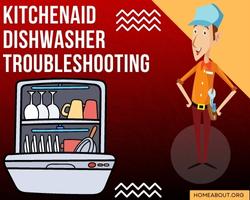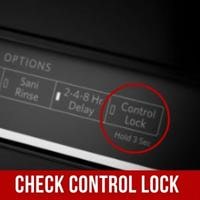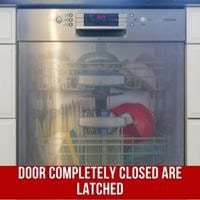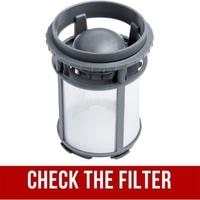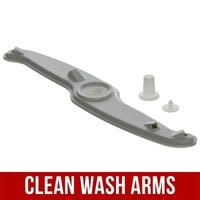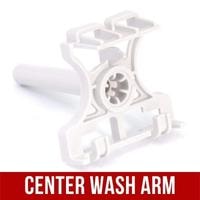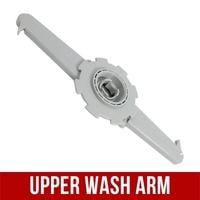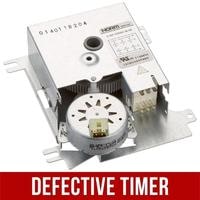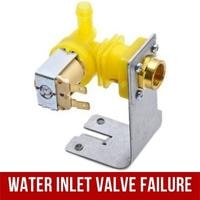Kitchenaid dishwasher troubleshooting. The Kitchenaid dishwasher is an integral part of our kitchen appliance.
It makes your work easier by washing the dirty dishes properly, saving your time for doing other important jobs.
It is appalling when your kitchen slabs are filled with dirty dishes, you have a lot of other things to do, and your Kitchenaid dishwasher stops working correctly.
But it’s expected that your dishwasher starts creating problems like not draining, not thorough cleaning, flashing lights, etc.
In this article, we’ll share many different problems with your dishwasher and repair methods.
Just stay with us for proper guidelines, detailed facts, and figures about your Kitchenaid dishwasher.
Kitchenaid dishwasher troubleshooting
Examine Electric Power
If your Kitchenaid dishwasher is not working, you must check the following issue.
Before going too deep, you need to examine the widespread and possible issues that may happen as the defective flow of electricity.
For this purpose, you need to check whether the plug is correctly plugged in.
The second thing you may check is whether the attached wires in the plug are tightened.
Make sure that the switch status is ON, and you may also check the switch that is probably located under the sink in your kitchen.
You may also use a multimeter to check the readings. You may examine whether the electricity flow is fulfilling the needs of your Kitchenaid dishwasher or not.
Check Control Lock
As Kitchenaid provides all possible facilities to make your life easier, Kitchenaid designed the control lock feature to accomplish this purpose.
Control lock saves your dishwasher from unplanned or unintended factory settings.
So, it locks all the functions during a wash cycle.
Whenever you press any button on your dishwasher during a cycle, it blinks the light, which is a clear sign that the control lock is ON and the other buttons are locked.
You may efficiently resolve the issue by just pressing the lock button for4 seconds.
Then, the control lock light will be turned OFF, which indicates that the button is unlocked now.
The Sleep Mode
Some Kitchenaid dishwashers have a function of sleep mode. For a smooth use of a dishwasher, ensure that your dishwasher sleep mode is turned OFF.
If you suspect your dishwasher sleep mode is ON, follow these steps to turn it OFF.
Press the Start or Resume or the Cancel, or you may turn off the sleep mode by just opening and closing the selected door.
Follow the Delay Wash Option
The following reason that may affect the performance of your dishwasher is the activated delay wash option.
This option allows you to wash dishes after a specific time that you have settled.
But if you activate it unintentionally or accidentally and don’t know why your Kitchenaid dishwasher is not functioning properly, you may check this option once.
Follow these steps to un-sub the delay wash option runs.
Press the Cancel button or Drain to unsub the delay wash feature.
Afterward, you may press the Resume or Start to start the cycle.
Kitchenaid Dishwasher Start Button Not Working
Door completely closed are Latched
The following prevalent issue that may be a reason for the Kitchenaid dishwasher not working is a damaged door or defective latch, or maybe the door is not fully closed.
Because your dishwasher doesn’t run till the door is not closed or latched correctly.
So, shut the door properly before starting a cycle.
You may also inspect that if the dishwasher door is entirely closed but still not working, there could be a reason your dishwasher door’s latch is damaged.
The lower dish rack placed in front can also cause the door to not latch properly.
If you think you can repair it, proceed with the action, but if it requires a replacement, it is better to replace the old latch properly with a new one.
Reset Kitchenaid Dishwasher
If you have tried all of the above options, and your Kitchenaid dishwasher is still not working, then you must try to reset sequences of your dishwasher.
It’s possible that after resetting the dishwasher, it may start working.
Follow these steps to simple reset the KitchenAid dishwasher.
- Firstly, disconnect the power cable, are Turn off the circuit breaker from the home electrical panel.
- If your dishwasher model’s plug is connected to the outlet, simply unplug it for some time.
- This process gives time for your dishwasher computer to reset sequence itself.
Other Issues of Kitchenaid Dishwasher
If you are worried about your Kitchenaid dishwasher, which is still not working.
Then you must follow the further instructions to find out why your Kitchenaid dishwasher is not working.
Clean the Components
When you buy a new Kitchenaid dishwasher, it works perfectly, but you must follow some steps that may maintain the performance of your dishwasher for a long time.
For Example, the dishwasher is an item that you use regularly.
And the components of the dishwasher may get clogged or blocked with the food particles or debris.
It may affect badly when one of the components gets clogged.
It would be best to clean your Kitchenaid dishwasher once a month using hot water before it puts you in any complications.
Check the Filter
It is a normal thing that the filter of your dishwasher is blocked with debris or heavy suds.
It may stop your dishwasher from doing its work correctly.
So whenever you suspect your dishwasher filter is not draining or working correctly, check whether or not it is clogged.
You may use hot soapy water with a soaked piece of cloth, and then gently clean the debris or excess suds from your dishwasher filter.
Clean Tub
If you find that the dishes are not clean and fresh, or you find them smelly, there may be a reason that the dishwasher tub needs to be cleaned.
To clean the stain or if you find suds, you don’t need to buy any expensive product for the cleaning purpose.
You can repair the solution at home.
You require one or two cups of vinegar, and then add some quantity of baking soda according to the hard or soft stains of your dishwasher.
Pour it into your dishwasher tub, and leave it for half an hour. Then take a sponge and scrub it. Use some hot water and start a wash cycle without dishes.
Try this method at least once a month for a new and clean Kitchenaid dishwasher tub.
Clean Wash Arms
If you suspect the dishes are not coming out clean from the upper rack or lower rack, there may be a problem with the wash arm assembly.
You may not get the proper results if one of the arms is clogged or blocked with tiny particles of food or debris.
Check the following steps to clean the spray arms if you find the block.
-
Lower Wash Arm Assembly
A lower wash arm assembly is responsible for flowing water or rinsing the lower rack dishes.
If you find the lower rack dishes not clean properly, you may check the lower wash arm holes.
If the lower arm is clogged or blocked with debris or food particles, you may proceed to clean the clogged.
You may gently use hot soapy water and a scrubbing item to scrub the lower arm.
-
Center Wash Arm
The Center wash arm is responsible for circulating water on the top rack of your dishwasher.
If you suspect your dishes are not cleaned well, there might be a reason for the clogged wash arm.
Remove the wash arm and remove the debris or blockage material from the arm’s holes.
You may use a brush or a sponge soaked in warm soapy water.
Kitchenaid dishwasher won’t start
-
Upper Wash Arm
The upper wash arm sprinkles the water on the dishes of upper rank.
If the upper arm gets clogged, it stops working correctly.
As a result, you may get dirty dishes from the top rank.
Before starting a wash cycle, clean the clogs with warm water using a brush, hard-wired, or a sponge.
If the arm cannot be clean, you may replace the old one with a new one.
Malfunctioned Components
An appliance is based on a network of different components.
Same as a network, one of the defective components may disturb the whole performance of your dishwasher.
In this step, we’ll discuss some components that need to be replaced if they are broken, damaged, or burnt and may seriously affect the working of the dishwasher.
-
Defective Timer
A timer is responsible for the wash cycle time.
If the dishwasher’s timer is broken or defective, it is impossible to get the correct functioning from the dishwasher.
Set a timer because it functions properly.
-
Tripped Thermal Fuse
A thermal fuse is located on the control board of your dishwasher.
It works as an emergency switch, as whenever it suspects overheating or malfunctioning any other component, it gets tripped and disconnects the power source.
It is a security measure that prevents any damage or the risk of catching fire due to overheating.
If your Kitchenaid dishwasher is not working, there may be a reason that the thermal fuse is burnt or tripped.
You may test it with a multimeter. If it does not show any readings, you need to replace it, as it is impossible to repair.
-
Main Control Board Failure
A central control board is one of the most integral components of your dishwasher as it is responsible for the power supply to the different components of your Kitchenaid dishwasher.
It’ll not be wrong to say it is the brain of your dishwasher.
When a primary control board defects, it stops transmitting the power to the other components.
But, if your dishwasher is not working, check the other components first because it is hard to diagnose the main control board.
So ensure to check that other components are working correctly. If you find no defect in anything else, then replace the main control board.
Dishwasher Water Supply Issues
In this step, we are going to discuss water-related issues.
For Example, we’ll discuss the water flow, required water temperature, and water pressure needed for a quality working of your dishwasher.
-
Water Temperature & Pressure
As you know, using hot water to remove stains is very effective. You may also use warm water in your dishwasher.
But you need to know the required and suitable temperature for your dishwasher. You must set the temperature on your house water heater to 120 Fahrenheit.
The pressure of water also affects the working of your dishwasher.
You need to set the water pressure of your home supply to 20 PSi so that your dishwasher may rinse the dishes properly after getting the required water pressure.
Increase the water supply pressure of your home so that the water inlet valve can open to supply the water to your dishwasher.
-
Water Inlet Valve Failure
If the Kitchenaid dishwasher is not cleaning correctly, or if there is a leakage issue in your dishwasher.
Then you may check out the water inlet valve and drain pump or drain hose.
The water inlet valve supplies the water to the dishwasher.
If the water inlet valve is damaged or there are any kinks in the water line, it develops problems for the dishwasher.
Ensure that the water line is appropriately connected with both ends and fulfills the required water for thoroughly cleaning the dishes correctly.
If it is not connected correctly, it may cause dirty dishes with a leakage issue.
In case the water valve is damaged, it may keep filling the dishwasher and become a cause of leakage. Replace the water valve if it is defective.
Dishwasher Blinking & Beeping
Sometimes, your dishwasher starts blinking lights or may start beeping, which is a sign of some error or a defect.
Depending on your dishwasher model, a user manual is better guidance.
But we’ll discuss the possible issue of blinking and beeping your dishwasher.
Flashing Blue Light
According to your Kitchenaid dishwasher model, flashing blue lights indicates a different type of issue.
You may get the best guidance from the user manual of your model.
But the most common issue of blinking blue light means that the door or latch is not fully closed.
A defective component or a problem with the dishwasher control panel or display panel. Interrupting the wash cycle may also lead to a blinking blue light.
Ge dishwasher won’t start just beeps
Dishwasher Beepings
When your dishwasher starts beeping, it probably means that there is a problem with the door. Maybe it is not closed fully or latched.
Or when your dishwasher completes the wash cycle, and the dishes are ready to come out, that time your dishwasher may start beeping.
It may also indicate the failure of any component in your dishwasher.
Error Codes
Sometimes, when your Kitchenaid dishwasher has a problem, it starts showing the error codes on the display of your dishwasher.
It is a kind of facilitation that you may quickly diagnose the issue by looking at the code. Each code belongs to a specific issue or a specific component. If you cannot get a perfect solution, then contact KitchenAid support.
Conclusion
KitchenAid dishwasher troubleshooting. We hope these instructions may help you a lot in troubleshooting your Kitchenaid dishwasher.
You may quickly diagnose the component failure, the meaning of error codes, the reason for the blinking light, the sign of beeping your dishwasher, and much more.
Reset Kitchenaid dishwasher is also one of the best options.
See installation instructions accordingly to your KitchenAid dishwasher model.
We recommend you be careful while tackling the powered appliance repair. Make sure to consider each fact and figure correctly to get the perfect results for your dishwasher.
